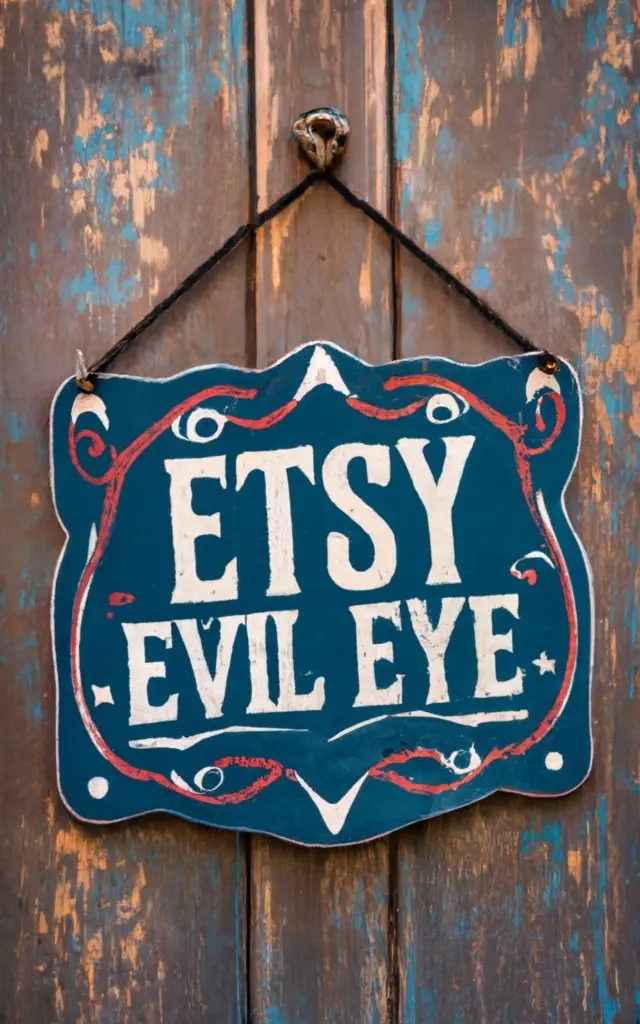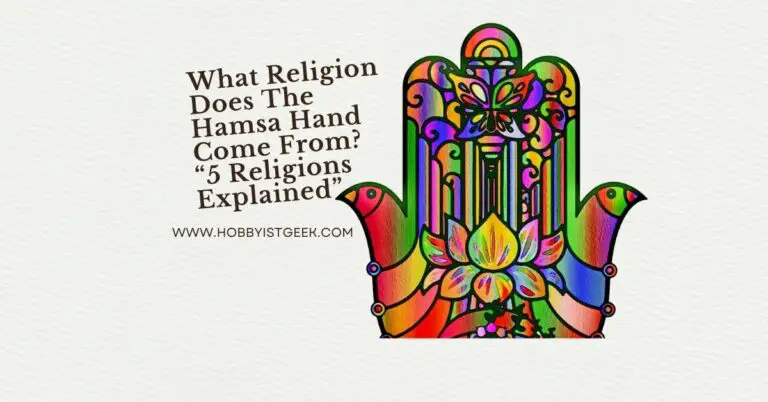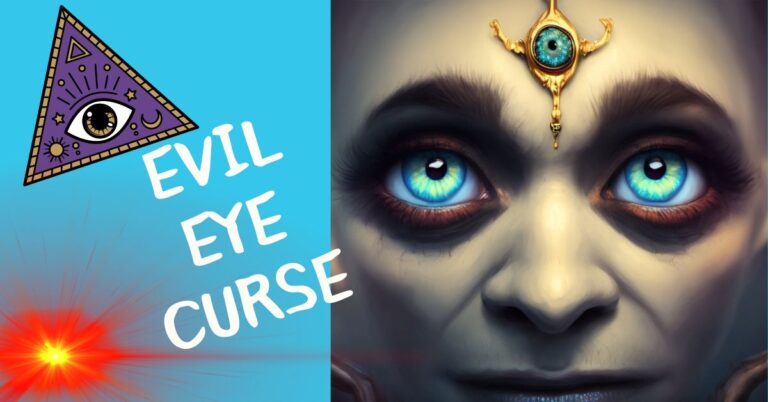The Science Behind Evil Eye: Unmasking Mysteries
Introduction
The Science Behind Evil Eye The concept of the “Evil Eye” has intrigued cultures for centuries, believed to bring misfortune. In this article, we use science to uncover its origins and impact. We explore its historical roots and the influence of superstitions in various cultures, examining cultural variations and protective rituals that offer insight into human psychology.
We also delve into recent neurological research on the emotions and envy linked to this belief. We discuss cognitive biases and social pressures that sustain it across generations.
This exploration aims to separate myth from reality, ending with a discussion on preserving cultural diversity while upholding science in the modern world. Join us as we use an interdisciplinary approach to understand our shared beliefs, emotions, and perceptions regarding the Evil Eye.

The Allure and Mystery of the Evil Eye
Have you ever felt a sense of unease when someone looked at you with envy or jealousy? That uncomfortable sensation, often accompanied by a shiver down your spine, is what many cultures attribute to the “Evil Eye.” Defined as a malevolent gaze believed to inflict harm or misfortune upon its recipient, the Evil Eye has captivated humanity for centuries. Found across diverse societies and embedded in folklore and superstition, this mystical phenomenon continues to intrigue scholars and enthusiasts alike.
Unveiling the Definition
The Evil Eye can be best understood as a potent mythological concept engrained in numerous cultures throughout history. While specific interpretations may vary, it generally refers to the supposed power possessed by certain individuals to cause harm with their envious gaze.
This harmful influence is believed to manifest in various ways, ranging from minor inconveniences to serious misfortunes like illness, accidents, or financial losses. Although the origins of the term remain elusive, ancient civilizations such as Mesopotamia, Egypt, and Greece all had their own versions of this belief.
The concept of a malignant eye capable of casting misfortune transcended time and geographical boundaries. Over millennia, it gradually became deeply ingrained within cultural practices around the world.
A Universal Symbol: Cultural Significance
The Evil Eye holds significant cultural importance in many societies. It serves as a symbol that unites people through shared beliefs and practices despite their different backgrounds.
From Mediterranean countries like Greece, Turkey, and Italy to regions like South Asia and Latin America — each culture has its own distinct version of this belief. In some traditions, individuals wear talismans or amulets known as “nazar” or “mal de ojo,” designed specifically to ward off the Evil Eye’s pernicious effects.
These protective items often take the form of an eye-shaped charm, featuring vibrant colors like blue or green. They are believed to absorb or repel the harmful intent behind the envious gaze.
The idea of the Evil Eye also finds expression in various rituals and practices. For instance, in certain cultures, believers may perform ceremonies involving prayers, incense, or sacred gestures to counteract its negativity.
In some cases, these rituals aim not only to protect individuals from harm but also to cleanse their surroundings and restore positive energy. As we embark on a journey exploring the science behind this enigmatic phenomenon, let us delve deeper into its historical roots and unravel the psychological and anthropological aspects that contribute to its enduring influence.
Historical Background
Origins in ancient civilizations (e.g., Mesopotamia, Egypt, Greece)
The belief in the Evil Eye dates back to the ancient civilizations of Mesopotamia, Egypt, and Greece. In Mesopotamia, it was known as “Saliq” and believed to be a malevolent force that could cause harm or misfortune with just a glance. The concept traveled across regions and cultures, taking on different names but retaining its core essence: the power of an envious gaze.
In ancient Egypt, the Evil Eye was associated with the goddess Wadjet, who was often depicted as a protective cobra. The symbol of the Eye of Horus also emerged during this time as a talisman against evil influences.
It was believed that individuals possessed different levels of vulnerability to the Evil Eye, depending on their social status and importance. In ancient Greece, where mythology thrived, the concept of the Evil Eye emerged in various forms.
The mythical figure known as Medusa possessed eyes that could turn anyone who made eye contact with her into stone. This notion further fueled beliefs about harmful gazes and their potential consequences.
Influence of folklore and superstitions
Folklore and superstitions have played a significant role in shaping beliefs surrounding the Evil Eye. Stories passed down through generations often described encounters with individuals possessing an intense gaze capable of inflicting harm or misfortune upon others.
In many cultures influenced by folkloric traditions, various rituals were developed to protect oneself from the Evil Eye’s malevolence. For instance, hanging amulets or charms near doorways or wearing specific jewelry (such as blue beads) were thought to ward off evil glances.
Superstitions related to avoiding eye contact also emerged across diverse societies. Breaking eye contact too quickly or avoiding it altogether became common practices to prevent the potential harm associated with direct gazes.
These beliefs became deeply ingrained in societies, contributing to the perpetuation of the Evil Eye myth. The historical background of the Evil Eye reveals its intriguing origins in ancient civilizations like Mesopotamia, Egypt, and Greece.
The influence of folklore and superstitions further contributed to its development as a concept steeped in mystery. In the following sections, we will delve deeper into the psychological perspectives and scientific explanations behind this fascinating phenomenon.
The Psychological Perspective
Psychological Explanation of the Evil Eye Belief
When it comes to understanding the phenomenon of the Evil Eye, psychologists have put forth several intriguing theories. One such theory suggests that the belief in the Evil Eye stems from our inherent tendency to attribute misfortune or harm to external sources.
In other words, when something bad happens to us or those close to us, we often seek external causes for these negative events. The concept of the Evil Eye provides a convenient explanation for such misfortunes, as it allows individuals to assign blame to a specific person who they believe has cast an envious gaze upon them.
Moreover, psychologists argue that our brains are wired to detect and respond strongly to social threats. Jealousy and envy, which are deeply rooted in human nature, play a significant role in this psychological perspective.
It is believed that individuals who possess envy or harbor feelings of jealousy towards others may unknowingly transmit negative energy through their gaze. This perception can lead people who believe in the Evil Eye to fear that jealous individuals can harm them or bring bad luck into their lives.
The Role of Envy and Jealousy in Causing Harm
Envy and jealousy have long been recognized as powerful emotions with potentially detrimental effects on personal relationships and well-being. In relation to the belief in the Evil Eye, these two emotions take on an intriguing dynamic. According to psychological theories, envy arises when one desires what another possesses but lacks themselves.
When this envy intensifies into jealousy due to perceived threats or competition over resources (such as love, success, wealth), it can fuel harmful intentions towards others. In traditional folk beliefs surrounding the Evil Eye, it is believed that intense envy or jealousy directed towards someone can manifest as actual harm or misfortune inflicted upon them.
The imagined power of one’s envious gaze becomes a potent symbol representing the destructive potential of jealousy. In this context, the Evil Eye belief serves as a warning against provoking envy in others and encourages individuals to be cautious about their own feelings of jealousy.
It is important to note that while envy and jealousy can certainly impact personal relationships, psychological research suggests that not all individuals who experience these emotions possess the ability to cause harm solely through their gaze. Nevertheless, understanding the psychological underpinnings behind the belief in the Evil Eye sheds light on how deeply ingrained envy and jealousy are within human nature and how these emotions have contributed to the development and perpetuation of this captivating cultural phenomenon.
The Anthropological Perspective
Cross-cultural variations in Evil Eye beliefs and practices
Across different cultures and societies around the world, the concept of the Evil Eye takes on unique forms, revealing fascinating cross-cultural variations. From the Mediterranean regions to South Asia, Africa to Latin America, there are diverse interpretations of how the Evil Eye manifests.
For instance, in some Middle Eastern countries like Turkey and Greece, it is believed that certain individuals possess an innate power to cast curses through their gaze alone. In contrast, other cultures perceive the Evil Eye as a result of unintentional envy or malicious thoughts directed towards others.
The way people protect themselves from the perceived harmful effects of the Evil Eye also varies greatly among different societies. Many cultures incorporate amulets or talismans into their daily lives as protective measures.
These objects can range from simple items like blue beads and palm-shaped amulets to intricate charms made with specific symbols believed to ward off evil energies. Rituals involving prayers, incantations, or specific gestures are also common ways to counteract the malevolent power associated with the Evil Eye.
Rituals and protective measures against the Evil Eye
One intriguing example of a ritual associated with protection from the Evil Eye is found in some parts of India. Here, a ceremony called “Aarti” is performed during religious festivals or auspicious occasions where participants use fire as a cleansing element against negative influences. The belief is that by waving a lit oil lamp in front of oneself or others while chanting mantras, any harmful energy arising from jealous eyes can be dispelled.
Similarly, among certain communities in Mexico and Central America, it is customary to perform “limpias,” which are purification rituals aimed at removing spiritual impurities caused by jealousy or envy. These limpias involve methods such as sweeping special herbs over one’s body or using smoke from ritualistic herbs like copal or sage to cleanse the environment and ward off negative energies.
These variations in beliefs and practices surrounding the Evil Eye highlight the rich tapestry of human cultures and their diverse ways of interpreting and dealing with perceived malevolent forces. By understanding these cultural nuances, we gain valuable insights into the complexity of human belief systems and how they shape our daily lives.
The Scientific Explanation
Physiological factors contributing to the belief (e.g., eye contact, facial expressions)
Have you ever felt a shiver down your spine when someone gave you an intense glare? Well, physiological factors might just explain why we get such eerie sensations. The belief in the Evil Eye is often linked to certain facial expressions and eye contact.
Research suggests that our brains are wired to detect and respond to these visual cues, triggering a range of emotions and even physical discomfort. Eye contact has long been recognized as a powerful form of communication.
It can convey trust, interest, or even dominance. However, prolonged eye contact can also make us feel uneasy or threatened.
These instinctive reactions have deep evolutionary roots. Our ancestors relied on assessing others’ intentions and emotions through eye contact for survival purposes.
Therefore, it’s no wonder that staring eyes can trigger fear or suspicions in some individuals. Additionally, specific facial expressions associated with envy or malice could contribute to the belief in the Evil Eye phenomenon.
For instance, research has shown that when someone is envious or displeased with another person’s good fortune, their facial muscles involuntarily contort into subtle yet telltale signs of negative emotion. These microexpressions might be imperceptible to most people consciously but can subconsciously influence our perception of others’ intentions.
Cognitive biases and perceptual mechanisms involved
Our minds are fascinatingly complex entities that often fall victim to various cognitive biases and perceptual mechanisms – and this holds true for the belief in the Evil Eye as well. One critical factor at play is what psychologists call confirmation bias: our tendency to favor information that confirms our preexisting beliefs while ignoring contradictory evidence.
In the context of the Evil Eye belief, confirmation bias may lead individuals to spot ill fortune or misfortune more readily after sensing an envious gaze upon them. They might attribute negative events or ailments to the malevolent influence of the Evil Eye, reinforcing their preconceived notions.
Furthermore, perceptual mechanisms such as pareidolia could contribute to the belief in the Evil Eye. Pareidolia refers to our brain’s tendency to see meaningful patterns or faces where none exist.
This phenomenon is why we might perceive faces in clouds or find hidden messages in random noise. In the case of the Evil Eye, people may interpret seemingly innocuous occurrences as evidence of its existence, attributing significance to chance events and thus perpetuating their belief.
Understanding these physiological factors, cognitive biases, and perceptual mechanisms that contribute to the belief in the Evil Eye can shed light on how our minds perceive and interpret reality. While science unravels these mysteries surrounding human perception and belief systems, it’s crucial to appreciate cultural diversity and respect differing interpretations of this age-old phenomenon.
Neurological Insights
The Intricate Dance of Emotions: Unveiling the Brain Regions Behind Evil Eye Recognition
Deep within the folds and crevices of our complex brains lies a remarkable network responsible for deciphering and processing emotions. When it comes to recognizing emotions related to the Evil Eye, certain regions take center stage. One such region is the amygdala, a small almond-shaped structure nestled deep within the temporal lobe.
It acts as a sentinel, swiftly scanning our surroundings for potential threats or intense emotions. Research suggests that the amygdala plays a pivotal role in identifying and responding to facial expressions associated with envy or malicious intent – both integral aspects of the Evil Eye phenomenon.
Another brain region that shines a spotlight on our understanding of Evil Eye recognition is the anterior cingulate cortex (ACC). Positioned in the frontal part of our brain, this region serves as an emotional compass, helping us detect and process social cues.
Studies have revealed that heightened activity in the ACC is linked to perceiving facial expressions conveying envy or ill-wishing, thus shedding light on its involvement in decoding Evil Eye-related emotions. The intricate interplay between these brain regions provides valuable insights into how we interpret and respond to non-verbal cues associated with this ancient belief.
The Jealous Mind: Delving into Neural Mechanisms Underlying Envy’s Web
Envy – an insidious emotion that can fester within even the most virtuous hearts – holds significant sway over beliefs surrounding the Evil Eye. Unraveling its neural mechanisms uncovers intriguing discoveries about its potential impact on others. Recent studies have illuminated two key players in understanding envy’s workings: mirror neurons and oxytocin.
Mirror neurons are fascinating cells tucked away within our brains that play a crucial role in empathy and imitation. These neurons fire not only when we perform an action but also when we observe someone else doing the same action.
In the context of the Evil Eye, mirror neurons may activate when we witness someone’s achievements or possessions, triggering feelings of envy within us. Another fascinating component in unraveling envy’s web is oxytocin, affectionately known as the “love hormone.” While primarily associated with bonding and trust, research suggests that oxytocin can also amplify feelings of envy.
Intriguingly, increased levels of this hormone have been found to enhance social sensitivity and promote withdrawal from enviable stimuli. These neurochemical dynamics offer compelling insights into how envy can influence social interactions and potentially fuel beliefs surrounding the Evil Eye.
In understanding the neurological underpinnings of Evil Eye recognition and envy’s impact on others, we delve into the intricate workings of our emotions at a fundamental level. By peering into these hidden realms within our brains, we gain a deeper appreciation for how ancient beliefs persist in shaping our perceptions and interactions even in today’s modern world.
The Power of Suggestion
The Placebo Effect on Both Victims and Perpetrators
The power of suggestion is a fascinating phenomenon that plays a significant role in the belief and effects of the Evil Eye. It is well-known that our minds have an extraordinary capacity to influence our physical well-being. In the case of the Evil Eye, both the victims and perpetrators can experience what is called the placebo effect.
When someone believes they have been affected by the Evil Eye, their mind can create physical symptoms that align with their cultural expectations. For instance, a person who believes they have been cursed by an envious gaze might experience headaches, fatigue, or even bad luck.
These symptoms are not caused by any external force but rather by their own beliefs. Similarly, those who believe they possess a malevolent gaze may unintentionally project negative energy onto others.
This could result in those around them experiencing misfortune or feeling uneasy in their presence. The belief in one’s ability to harm others through mere eye contact can have a profound psychological impact on both parties involved.
Social Influence’s Role in Reinforcing Belief Systems
One cannot overlook the role of social influence in perpetuating belief systems surrounding the Evil Eye. Throughout history and across cultures, communities have shared stories and experiences regarding this phenomenon, building upon each other’s beliefs. This collective reinforcement strengthens faith in its existence.
In many societies where belief in the Evil Eye is prevalent, children grow up hearing cautionary tales about its potential harm. They are taught rituals to protect themselves from its ill effects from a young age.
As these stories and practices are passed down through generations, they become deeply ingrained within society’s fabric. Moreover, social pressure can make individuals conform to these beliefs even if they doubt their validity personally.
People fear being ostracized or labeled as skeptics if they openly question age-old traditions associated with the Evil Eye. This social reinforcement creates a feedback loop that sustains and strengthens the belief system surrounding it.
The power of suggestion and social influence contribute significantly to the perpetuation of beliefs and effects related to the Evil Eye. The placebo effect can cause both victims and perpetrators to experience physical symptoms or project negative energy, all rooted in their own convictions.
Additionally, society plays a vital role in reinforcing these beliefs through storytelling, rituals, and societal pressure to conform. Understanding these psychological and sociocultural dynamics is crucial in unraveling the mysteries surrounding the Evil Eye phenomenon.
Modern Interpretations
Psychological Interventions to Alleviate Fear or Anxiety Caused by the Evil Eye
In our modern world, where science prevails over superstition, it is essential to address the fear and anxiety that can be caused by beliefs in the Evil Eye. Understanding the psychological perspective behind this phenomenon has led to the development of effective interventions that aim to alleviate such distress. One of these interventions is cognitive-behavioral therapy (CBT), a widely recognized approach used in treating various anxiety disorders.
CBT helps individuals challenge and modify their negative thoughts and beliefs about the Evil Eye. By providing evidence-based explanations and encouraging rational thinking, therapists empower people to reframe their perception of perceived threats from others’ envy or ill intentions.
Another helpful technique is relaxation therapy. This involves teaching individuals practical strategies such as deep breathing exercises, progressive muscle relaxation, and visualization techniques.
These relaxation techniques can help calm the mind and body, reducing feelings of fear or anxiety associated with the belief in the Evil Eye. Furthermore, mindfulness practices have shown promise in managing distress related to cultural beliefs like the Evil Eye.
By cultivating present-moment awareness without judgment, individuals can develop resilience against external influences that trigger their fears. Mindfulness teaches people to acknowledge their emotions without being controlled by them, ultimately fostering a sense of inner strength and tranquility.
Evolution of Beliefs in Contemporary Societies
As societies evolve and become more interconnected through globalization and information sharing, traditional beliefs surrounding the Evil Eye also experience transformation. In contemporary societies, these ancient concepts often take on new meanings or adapt to fit within different cultural contexts. One prevalent modern interpretation revolves around understanding envy as a natural human emotion rather than an evil force causing harm.
Psychologists argue that envy serves as motivation for self-improvement or achieving personal goals when channeled constructively. By reframing the Evil Eye as a catalyst for personal growth, individuals can view envy in a more positive light, thereby diminishing its potentially harmful effects.
In addition to psychological reinterpretations, the rise of social media has influenced the evolution of Evil Eye beliefs. With the prevalence of online platforms, people now have a wider scope for comparison and envy.
This has resulted in new concerns about “digital evil eyes” where individuals feel that their success or happiness may provoke jealousy from others online. As a result, some societies have developed new rituals or adaptations to protect against modern iterations of the Evil Eye.
Overall, while beliefs in the Evil Eye persist in contemporary societies, they are often subject to reinterpretation and adaptation based on changing cultural landscapes and scientific understanding. By embracing these evolving interpretations and integrating them with psychological interventions, individuals can navigate their fears more effectively while appreciating the rich tapestry of beliefs that exist across different cultures.
Lesser-known Facts about the Evil Eye
Unusual Variations across Cultures
Throughout history, various cultures have developed unique ways to protect themselves from the malevolent effects of the Evil Eye. One intriguing variation can be found in Mediterranean regions, where people adorn themselves and their homes with blue beads.
These vibrant, eye-catching ornaments are believed to distract and ward off the gaze of those who possess the Evil Eye. This tradition dates back centuries and is still prevalent today in countries like Turkey, Greece, and Egypt.
Another fascinating aspect is the use of hand gestures as a defense against the Evil Eye. In certain cultures, such as Middle Eastern and South Asian societies, individuals may form intricate hand signs or create specific gestures to ward off evil influences.
These gestures often involve crossing fingers or making certain hand shapes to create a protective barrier against harmful energies. It is truly remarkable how these cultural practices have been passed down through generations, preserving ancient beliefs in modern times.
Famous Historical Figures Associated with the Evil Eye Myth
The belief in the power of the Evil Eye has been ingrained in human consciousness for centuries, and it has even permeated historical accounts involving influential figures. One such example is Emperor Nero of Ancient Rome.
Legend has it that Nero possessed a captivating gaze capable of inflicting harm upon others through envy and jealousy—an ability akin to that attributed to the Evil Eye. Whether fact or fiction, this perception contributed to his reputation as a malevolent ruler.
Additionally, renowned artists throughout history have been associated with both creating and warding off the effects of the Evil Eye. Take for instance Michelangelo’s renowned sculpture “David.” It is said that he purposely left one eye slightly asymmetrical to protect his masterpiece from potential harm caused by envious onlookers who possessed an evil gaze.
The association between prominent historical figures and the Evil Eye myth serves as a testament to the enduring impact of this belief system on human culture. It demonstrates how even the most influential individuals were not immune to the fear and fascination surrounding this ancient phenomenon.
Lesser-known facts about the Evil Eye shed light on its diverse manifestations across cultures as well as its intriguing connections to historically significant figures. The use of blue beads as protective talismans and hand gestures as defensive measures highlight the creative ways in which people have safeguarded themselves from harm.
Furthermore, the association of famous historical figures with the myth underscores the widespread influence and enduring fascination humans have had with this concept throughout time. Exploring these lesser-known aspects enriches our understanding of this universal belief and emphasizes its cultural importance in various societies around the world.
Conclusion for The Science Behind Evil Eye
Reflection on Debunking Myths with Scientific Understanding
Understanding the science behind the Evil Eye not only unravels the mysteries surrounding this ancient belief but also allows us to dispel unfounded myths that have persisted for centuries. By examining the psychological, anthropological, and neurological perspectives, we can gain insight into why this belief exists and how it has shaped various cultures.
Acknowledging that envy and jealousy play a significant role in causing harm helps us recognize that the power of the Evil Eye lies within human emotions rather than supernatural forces. This understanding empowers individuals to address these feelings proactively and overcome their negative impacts.
Cultural Diversity: A Tapestry of Beliefs
One of the most fascinating aspects of exploring the Evil Eye is its prevalence across diverse societies. The belief in some form of malicious eye-directed harm extends beyond geographical boundaries, highlighting its deep-rooted cultural significance.
By appreciating these variations, we come to understand how different communities interpret and protect themselves against this perceived threat. This recognition fosters a broader acceptance and appreciation of cultural diversity, illuminating the rich tapestry woven by humanity’s collective beliefs.
An Optimistic Outlook
As we delve into scientific explanations for the Evil Eye, it becomes apparent that there is no inherent malevolence in our gaze or expressions. Instead, it is our interpretation and perception that shape our reality. By recognizing this, we can cultivate empathy and compassion rather than fear or suspicion towards others’ intentions.
Moreover, demystifying ancient beliefs through scientific understanding encourages open-mindedness and critical thinking. It reminds us that while traditions may vary across cultures, there is always room for knowledge exchange and growth.
Delving into The Science Behind Evil Eye: Unmasking Mysteries brings forth a deeper comprehension of human nature while debunking age-old myths. Through understanding the psychological, anthropological, and neurological aspects of this belief, we can unravel the complex tapestry that connects different societies worldwide.
By embracing cultural diversity and adopting a scientific perspective, we foster a harmonious coexistence in which empathy prevails over fear. So let us embrace the knowledge gained from this exploration and move forward with optimism, fostering understanding, compassion, and unity among diverse cultures.
Frequently Asked Questions
- What exactly is the Evil Eye belief?
The Evil Eye is the belief that certain people possess the power to inflict harm or misfortune on others simply by looking at them with ill intent or envy. This malevolent gaze is thought to cause problems like illness, injury, or bad luck.
- How did the Evil Eye belief originate?
The exact origins of the Evil Eye belief are unclear, but versions of it have existed since ancient times in many cultures around the world. Some of the earliest references date back thousands of years to ancient Egypt, Mesopotamia, and Greece.
- Why is the color blue significant in Evil Eye traditions?
In many cultures, the color blue is thought to have protective powers against the Evil Eye. Blue amulets and beads are commonly used as talismans. Some believe the blue hue wards off envious gazes or absorbs negativity.
- What are some famous Evil Eye symbols?
Some common symbols used to represent the Evil Eye include eyes, blue beads or circles, hands with an eye in the palm, and animal horns. The Eye of Horus and the Hand of Fatima are two famous amulet symbols meant to ward off the Evil Eye’s power.
- Is there any scientific basis behind the Evil Eye?
There’s no scientific evidence that envious glares can supernaturally cause misfortune. However, psychological factors like the placebo effect, cognitive biases, and self-fulfilling prophecies may contribute to the belief persisting across cultures.
2013 study published in the journal “Anthropology & Medicine”
A 2013 study published in the journal “Anthropology & Medicine” found that people who believe in the evil eye are more likely to experience anxiety and depression.
The study also found that people who believe in the evil eye are more likely to engage in superstitious behaviors, such as wearing amulets or avoiding certain people.
Here are some things that can be done to improve YOUR life as a result of this study:
- Educate people about the belief in the evil eye and its potential impact on mental health. This can help people to understand that their anxiety and depression may be related to their belief in the evil eye, and that they are not alone. It can also help people to develop coping mechanisms for dealing with their anxiety and depression.
- Challenge the cultural beliefs and values that are associated with the evil eye. For example, the belief that the evil eye is a punishment for sins or for being too proud or successful is harmful and should be challenged.
- Provide support for people who are struggling with anxiety and depression as a result of their belief in the evil eye. This support can be provided by mental health professionals, religious leaders, and community members.
Here are some specific things that YOU can do to improve YOUR lives:
- Learn about the science of anxiety and depression. This can help you to understand your symptoms and to develop coping mechanisms.
- Seek professional help if you are struggling with anxiety or depression. A therapist can teach you coping skills and help you to develop a treatment plan.
- Connect with people who understand what you are going through. There may be support groups available in your community, or you can find online support groups.
- Challenge your own negative thoughts and beliefs. When you have a negative thought, ask yourself if there is any evidence to support it. If not, try to replace the thought with a more positive one.
If you enjoyed this informative article I know you will love:
Evil Eye Bracelet Color Meaning: How Colors Influence Your Life!
Unlock the Power of Evil Eye Protection!
Hobbyist Geek. Com
Explore HobbyistGeek.com today, where I’ve curated a wealth of articles covering everything you need to know about the Evil Eye.
Discover recommended materials, learn proper rituals, delve into color symbolism, and even find in-depth reviews of specific Evil Eye products to aid you in choosing the perfect one.
Strengthen your protection against the Evil Eye by visiting www.HobbyistGeek.com.
Don’t forget to sign up for our email list to stay updated with exclusive insights and offers.
Feel free to drop any questions you may have below – I’m here to guide your spiritual journey.
Check out more information on Evil Eye!
- Jewelry Making Ideas: Seasonal Crystal Trends That Command Premium Prices - May 31, 2025
- Evil Eye Hand: Unveiling the Mystical Origins and Meanings - February 2, 2024
- Amegreen Amethyst Meaning: Discover the Hidden Magic! - February 2, 2024








